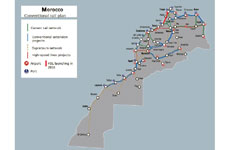
Categorías
Publicaciones
High-speed rail in developing countries and potential inequalities of use: the case of Morocco
2/7/2018

The 21st century is characterized by the extension of the high‐speed rail network in developing or emerging countries. While lines are already in operation in China and Turkey, others are under construction in Morocco and Iran, and projects exist in numerous other countries (Brazil, Malaysia, Egypt, etc.) in very different socio‐economic contexts and characterized by significant inequalities. What are the effects of high‐speed lines in these countries? By improving territories’ accessibility, high‐speed lines can foster population mobility and exchanges within a given country or between two or more countries in the case of international lines. But, especially in developing countries, one key issue is knowing for whom and for what use they are built. The aim of this article is to show that the creation of a high‐speed line could reinforce the existing inequalities that are widespread in this type of country because the uses of such a line are spatially, economically and socially quite different. Our analysis will be illustrated by the case of Morocco.
Descargar artículo (pdf) »


